
Roots
A whispering current moves through the ages, carrying stories of resilience, of wisdom cultivated under sun-drenched skies, and of a deep connection to the very strands that crown us. This is not simply a discussion of botanical chemistry or regimen planning. No, this journey delves into the very soul of a strand, tracing its lineage through time, seeking the echoes of ancient practices that still hum within our contemporary textured hair traditions. Our exploration of Castor Oil’s Ancestral Role is an invitation to listen to those echoes, to feel the enduring pulse of heritage.
We contemplate how the earth’s bounty, once understood through intuitive wisdom, continues to shape our understanding of holistic care for hair that dances with its own unique helix. It asks of us ❉ can the profound knowledge embedded in ancient castor oil practices truly inspire the routines we build today for our textured tresses?

Hair Anatomy and Its Ancestral Resonance
To truly understand how ancient castor oil practices might speak to contemporary textured hair regimens, we must first gaze upon the very architecture of textured hair itself. This isn’t just about curl patterns; it’s about the very structure, from root to tip, a blueprint refined through generations. A cross-section of a textured hair strand, unlike its straighter counterparts, reveals an elliptical or flat shape.
This particular geometry, coupled with a higher number of disulfide bonds and a more uneven distribution of keratin, gives rise to its magnificent coils and kinks. These inherent structural qualities contribute to its strength, yet also to its predisposition for dryness and breakage due to the path sebum must travel down the coiling shaft.
Ancient communities, without electron microscopes or chemical analyses, possessed an intuitive grasp of these characteristics. They recognized the hair’s tendency toward dryness, its need for particular moisture, and its thirst for emollients that would soften and protect. They saw hair not as inert matter, but as a living extension of self, deeply linked to identity and communal strength. This perspective informed their selection of botanicals, including castor oil.
The oil, thick and unctuous, offered a palpable sense of lubrication and protection, a visible sheen that spoke of vitality. It was an act of honouring the hair’s inherent needs, a dialogue between earth’s offering and human touch.

Traditional Classifications of Hair and Cultural Wisdom
While modern trichology offers numerical classifications for curl types, ancestral societies articulated their understanding of hair through far more nuanced lenses, often interwoven with spiritual, social, and aesthetic values. Hair texture might be described by its relationship to the sun (how it absorbed light), its feel (softness, resilience), or its behaviour (how it held a braid or twist). These were not merely observations; they were acknowledgements of the hair’s living qualities.
Castor oil, known in various regions as “Miracle Oil” or “Palm of Christ,” was often assigned properties far beyond simple conditioning. Its perceived ability to thicken, to darken, and to bring a lustrous quality to hair made it invaluable within these traditional classifications, irrespective of the scientific nomenclature we use today.
Ancient societies possessed an intuitive grasp of hair’s inherent needs, recognizing its thirst for emollients like castor oil.
The deep roots of this botanical in various cultures speak volumes. In some West African traditions, specific oils were associated with certain hair styles worn for rites of passage, reflecting a language woven into the very fabric of communal life. In these contexts, the application of castor oil was less about adherence to a product directive and more about a sacred practice, a continuation of ancestral dialogues with nature.

The Foundational Language of Textured Hair
Every culture holds its own lexicon for describing the world around it, and hair is no exception. Before the advent of universal hair typing systems, communities of African descent created rich vocabularies to describe the myriad textures that thrived within them. Terms like Coils, Kinks, Curls, and Waves, while now mainstream, draw their etymology from observations of natural hair behaviour.
Within these descriptions, the function of nourishing oils like castor oil was implicitly understood. It was applied to soften, to detangle, to reduce friction, and to seal in moisture—actions that directly address the specific structural challenges of highly textured hair.
The oil’s viscous nature made it a favoured choice for traditional styling practices. Its ability to coat the strand, providing slip and pliability, made braiding and twisting less arduous, reducing stress on the hair shaft. This ancient, tactile understanding of the oil’s properties forms a seamless bridge to our contemporary appreciation for its utility in caring for delicate textures.

Hair Growth Cycles and Historical Considerations
The natural cycle of hair growth—anagen, catagen, and telogen phases—is universal. However, the manifestation of these cycles, and their perceived health, could be influenced by a multitude of historical factors ❉ diet, environmental stressors, and the demands of labour. Ancestral communities often faced nutritional deficiencies or harsh climates that could impact hair vitality. In such contexts, plant-based remedies, including castor oil, gained profound importance.
The belief in castor oil’s ability to stimulate growth or strengthen existing hair, a belief passed down through generations, may stem from its emollient properties mitigating breakage, thus preserving length. A strand protected from mechanical stress and environmental elements simply lasts longer. The consistent, ritualistic application of oils like castor oil could have significantly reduced hair loss attributed to physical manipulation, leading to the observation of healthier, seemingly more abundant hair.
| Aspect of Hair Hair Structure |
| Ancestral Understanding (Heritage Lens) Observed varied textures; understood needs for moisture and protection based on feel and behaviour. |
| Contemporary Scientific View Identifies elliptical follicle shape, uneven keratin distribution, and disulfide bond patterns. |
| Aspect of Hair Hair Health |
| Ancestral Understanding (Heritage Lens) Linked health to vitality, shine, and growth; perceived plant oils as strengthening and growth-promoting. |
| Contemporary Scientific View Connects health to cuticle integrity, protein balance, and hydration levels. |
| Aspect of Hair Castor Oil's Role |
| Ancestral Understanding (Heritage Lens) Used for sheen, pliability in styling, believed to thicken and stimulate growth. |
| Contemporary Scientific View Recognized for its ricinoleic acid content, emollient properties, and anti-inflammatory effects on the scalp. |
| Aspect of Hair The enduring legacy of ancestral practices informs modern scientific inquiry into the efficacy of natural ingredients. |

Ritual
The hands that tended hair in ages past were not merely performing a chore; they were engaging in a deeply personal and communal ritual. This ritual was imbued with meaning, passed down through the gentle, instructive touch of elder to youth. Castor oil, in its various historical forms, stood as a silent witness and active participant in these practices, its thick consistency a familiar comfort, its purported properties a source of hope. Here, we observe how these ancient practices, steeped in the art and science of hair manipulation, offer lessons that resonate with our modern desires for beautifully styled, protected, and revered textured hair.

Protective Styling Encyclopedia
Protective styles—braids, twists, cornrows, and buns—are not modern innovations. They are a profound legacy, an inheritance from ancestors who recognized the need to shield delicate hair from the elements, minimize manipulation, and preserve length. These styles were more than aesthetic choices; they were strategies for survival, emblems of status, and canvases for spiritual expression.
In many West African societies, the intricacy of a braid could signify marital status, age, or even tribal affiliation. The preparation of the hair for these styles often involved significant time and specialized ingredients, among which certain botanical oils, including indigenous forms of castor oil, held a special place.
The oil’s substantial weight and viscosity made it an ideal lubricant for braiding and twisting, reducing friction and helping the hair lay smoothly. This minimized frizz and breakage, allowing styles to last longer and offer true protection. The ancient applications of such oils were a testament to the acute observational skills of our forebears ❉ they understood, through repeated practice, the optimal conditions for preserving hair health within complex, structured styles.

Defining Natural Style with Ancestral Methods
The contemporary movement towards embracing natural texture finds a powerful echo in ancestral practices. For millennia, textured hair was styled and celebrated in its inherent forms. Definition was achieved not through chemical means, but through careful manipulation, deep conditioning, and the application of oils that enhanced curl clumps and minimized shrinkage. Think of the meticulous finger-coiling techniques or the deliberate sectioning of hair before braiding.
Castor oil’s density made it an excellent sealant for these practices, helping to lock in moisture and provide a pliable hold. Its application before or during the styling process aided in creating smooth, defined coils and elongating twists, making the hair more manageable. This heritage-driven approach to definition honors the hair’s natural inclinations, promoting strength and elasticity rather than forcing it into unnatural forms.
Protective styles, deeply rooted in ancestral wisdom, found a natural ally in castor oil’s ability to lubricate and shield delicate strands.
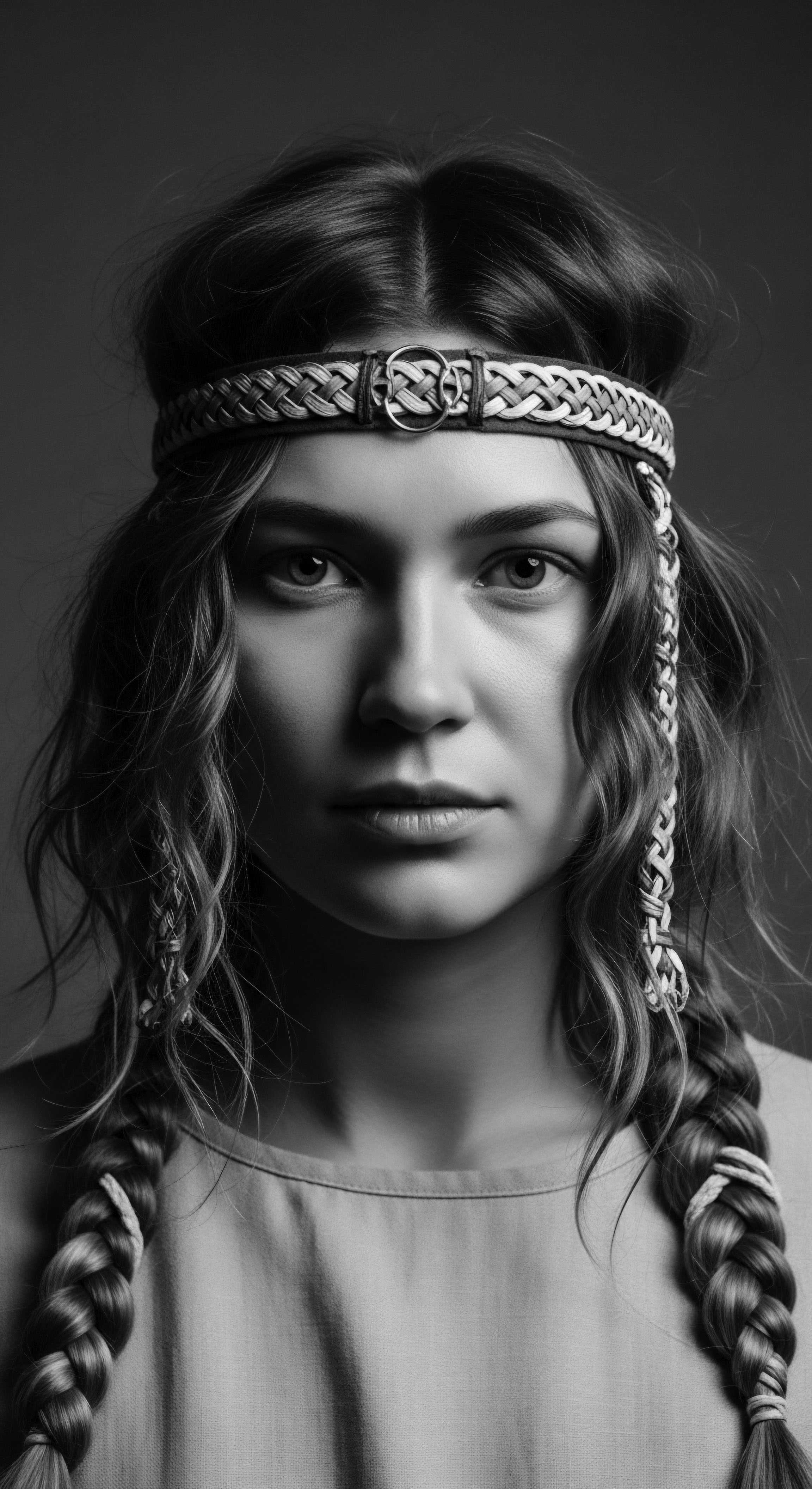
Adornment and Its Historical Roots
Wigs and hair extensions, often viewed as modern fashion statements, also possess a rich ancestral history across numerous cultures, including ancient Egypt and various African societies. These adornments served diverse purposes ❉ status symbols, ceremonial regalia, or simply practical solutions for hair management. In many instances, the natural hair beneath these additions, or the extensions themselves, required preparatory care.
Oils like castor oil would have been used to condition the scalp and hair before the attachment of extensions, providing a protective barrier. They would also have been applied to the extensions themselves, particularly those made from natural fibers or human hair, to maintain their integrity and appearance. This continuum, from ancient practices of adornment to our present-day use of extensions, highlights a shared historical thread of enhancing and protecting hair, whether our own or added.

Thermal Reconditioning and Ancestral Contexts
While modern heat styling tools present their own challenges, the concept of manipulating hair with warmth is not new. Ancestral methods of hair stretching, using tension and gentle heat (such as from warm stones or sun exposure), existed to prepare hair for styling or to reduce shrinkage. These methods, however, were typically far less intense than modern thermal reconditioning and were almost always accompanied by the liberal application of protective emollients.
Castor oil’s high smoke point and lubricating properties would have made it a suitable choice for such historical thermal applications, offering a degree of protection against the inherent dryness that heat can impart. This ancestral foresight, prioritizing a shield against potential damage, serves as a poignant reminder for contemporary regimens to prioritize heat protection when using thermal tools, underscoring the timeless need for care.
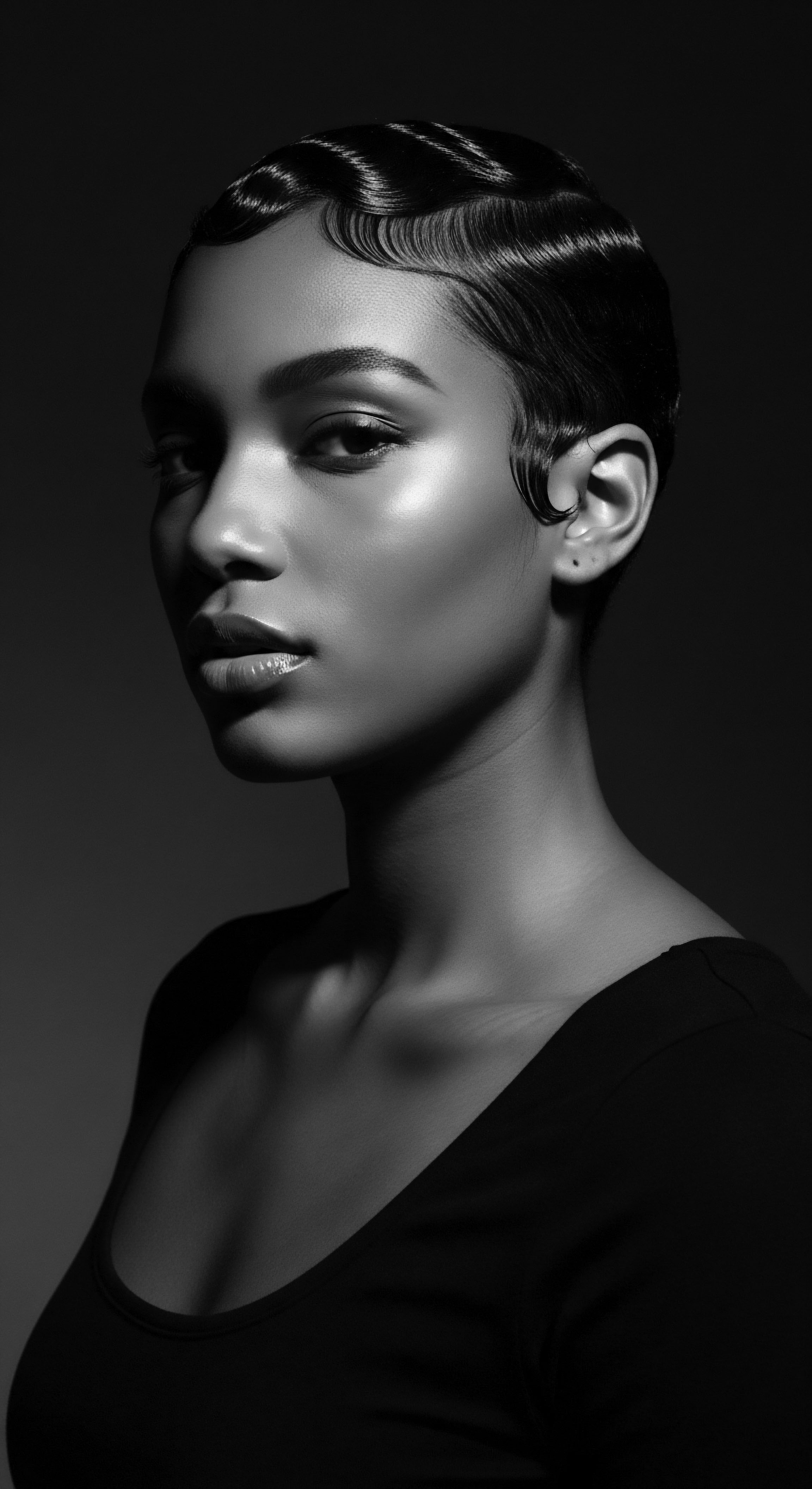
The Ancestral Hair Toolkit
The tools of ancient hair care were simple yet effective, born of ingenuity and a deep connection to natural resources. Combs carved from wood or bone, pins fashioned from reeds, and various containers for mixing and storing botanical preparations comprised the ancestral toolkit. Castor oil often found its place alongside these implements, either stored in gourds or clay pots, ready for application.
The very act of oiling the hair was often performed with the bare hands, allowing the practitioner to feel the texture, assess its needs, and distribute the oil with precision. This sensory engagement is a crucial aspect of ancestral care, fostering a bond between individual and hair. Contemporary textured hair regimens can draw inspiration from this mindful approach, encouraging a deliberate, tactile connection to the hair during product application.
- Wooden Combs ❉ Used for gentle detangling and distributing oils.
- Clay Pots ❉ Containers for mixing and storing hair remedies, including castor oil.
- Fingers and Palms ❉ The primary tools for application, fostering a direct connection to the hair.
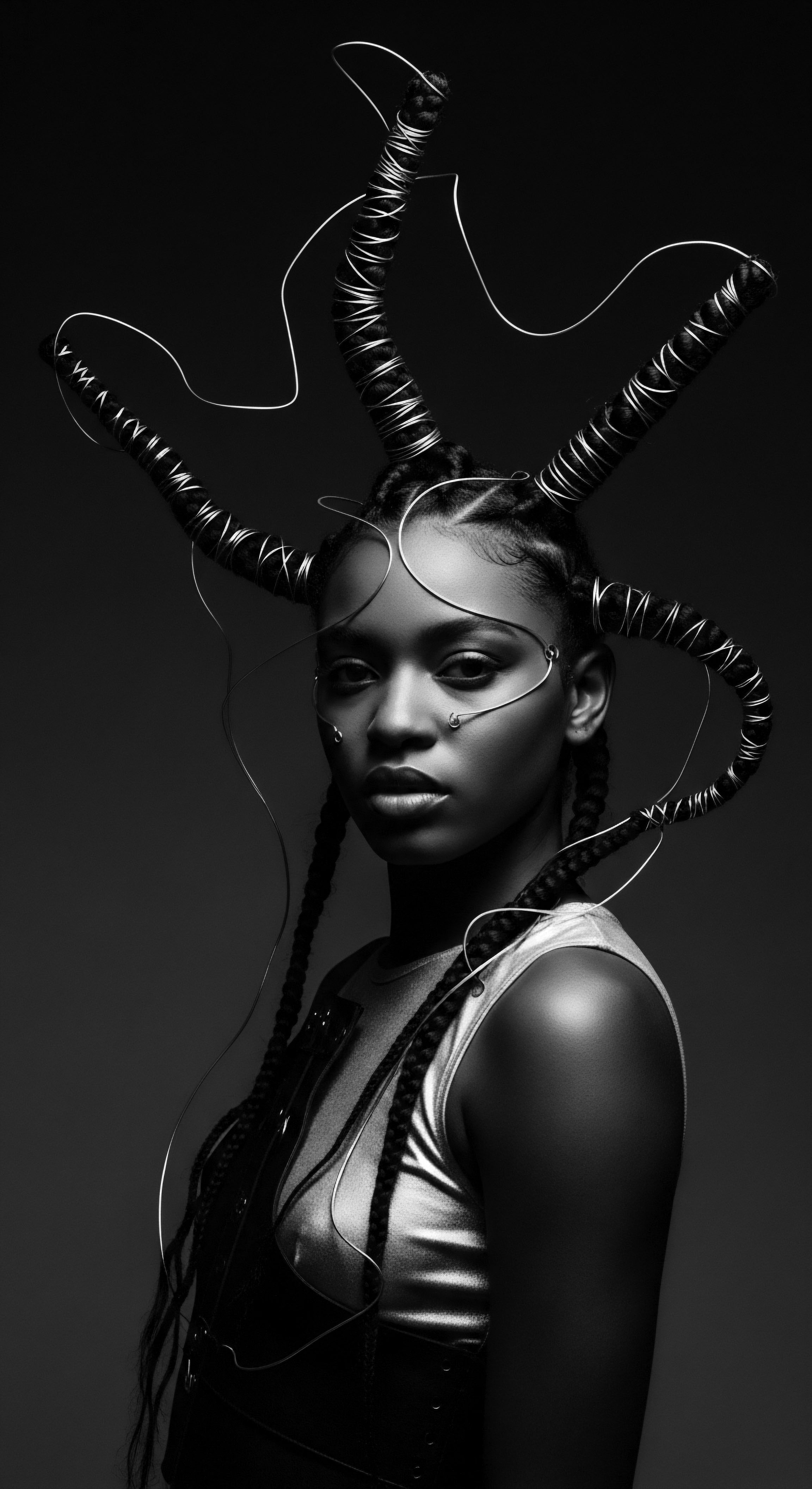
Relay
The knowledge of our ancestors is not a relic to be dusted off and admired; it is a living current, pulsing through the veins of our present-day care rituals. The seemingly simple acts of tending to textured hair with oils like castor oil are, in fact, complex dialogues between ancient empirical wisdom and modern scientific validation. This section explores how the enduring legacy of castor oil in textured hair care transcends mere folklore, offering profound insights for holistic wellness and intelligent problem-solving rooted in a rich heritage.
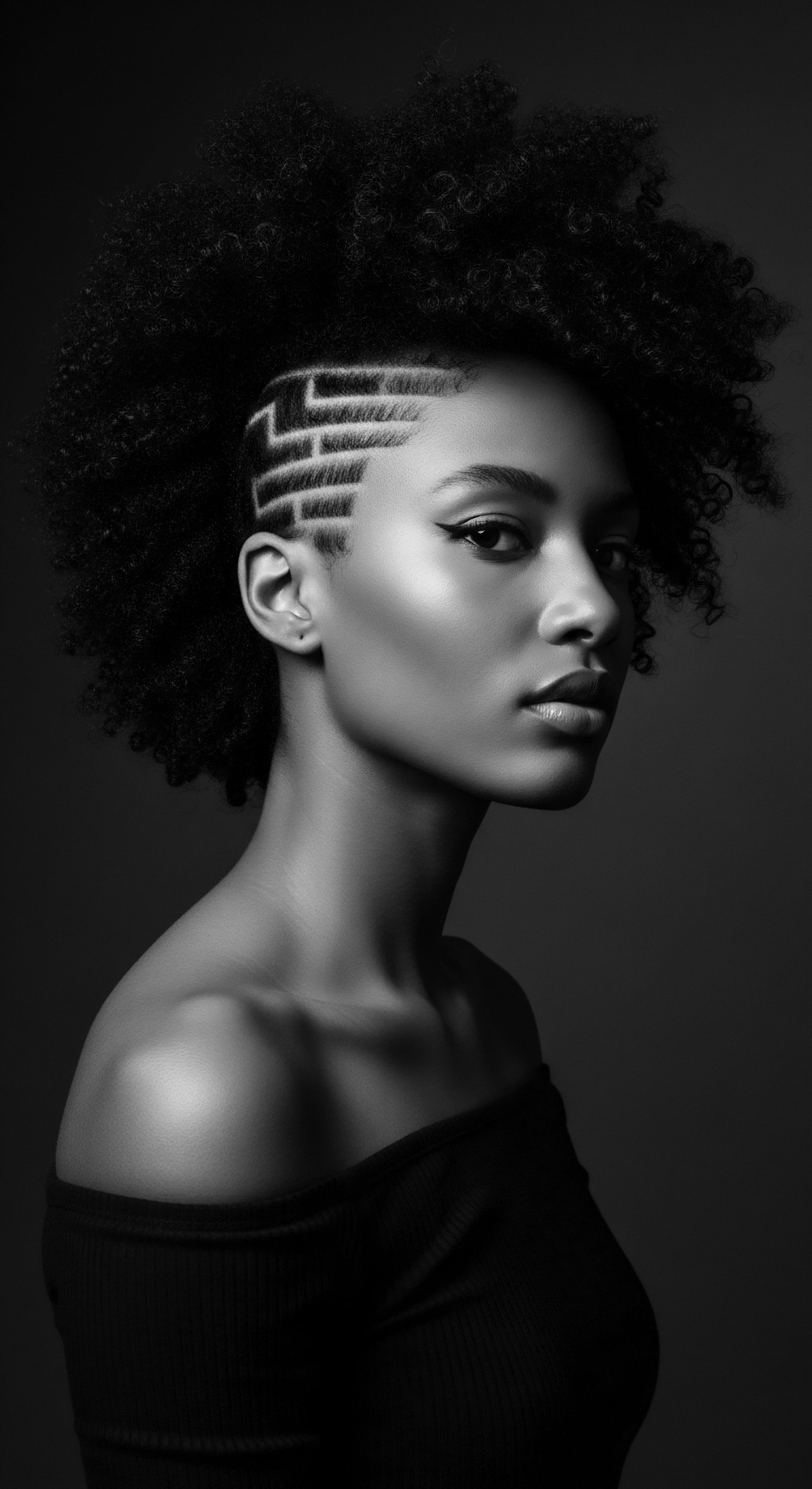
Crafting Personalized Regimens from Ancestral Blueprints
Building an effective hair care regimen today often feels like a scientific endeavour, requiring careful selection of products and techniques tailored to individual hair needs. Yet, this personalized approach finds a deep echo in ancestral practices. Communities did not apply a one-size-fits-all solution; rather, hair care was intrinsically linked to individual circumstances, environmental factors, and seasonal shifts. The choice of oils, herbs, and application methods was often nuanced, guided by observation and inherited knowledge.
Castor oil, particularly Jamaican Black Castor Oil (JBCO), serves as a powerful testament to this legacy. The traditional method of processing JBCO—roasting the castor beans, then boiling them before extracting the oil, which results in its distinctive dark color and ash content—is a heritage practice in itself. This process, developed over generations in the Caribbean by descendants of enslaved Africans, was not merely arbitrary. It was a deliberate refinement, perhaps intuitively understood to enhance the oil’s efficacy.
Modern analysis reveals that the ash from this roasting process contains minerals that might contribute to scalp health, offering a scientific grounding for an ancestral technique (Johnson, 2018, p. 78). This example highlights how contemporary regimens can gain richness by understanding the “why” behind historical preparation methods.
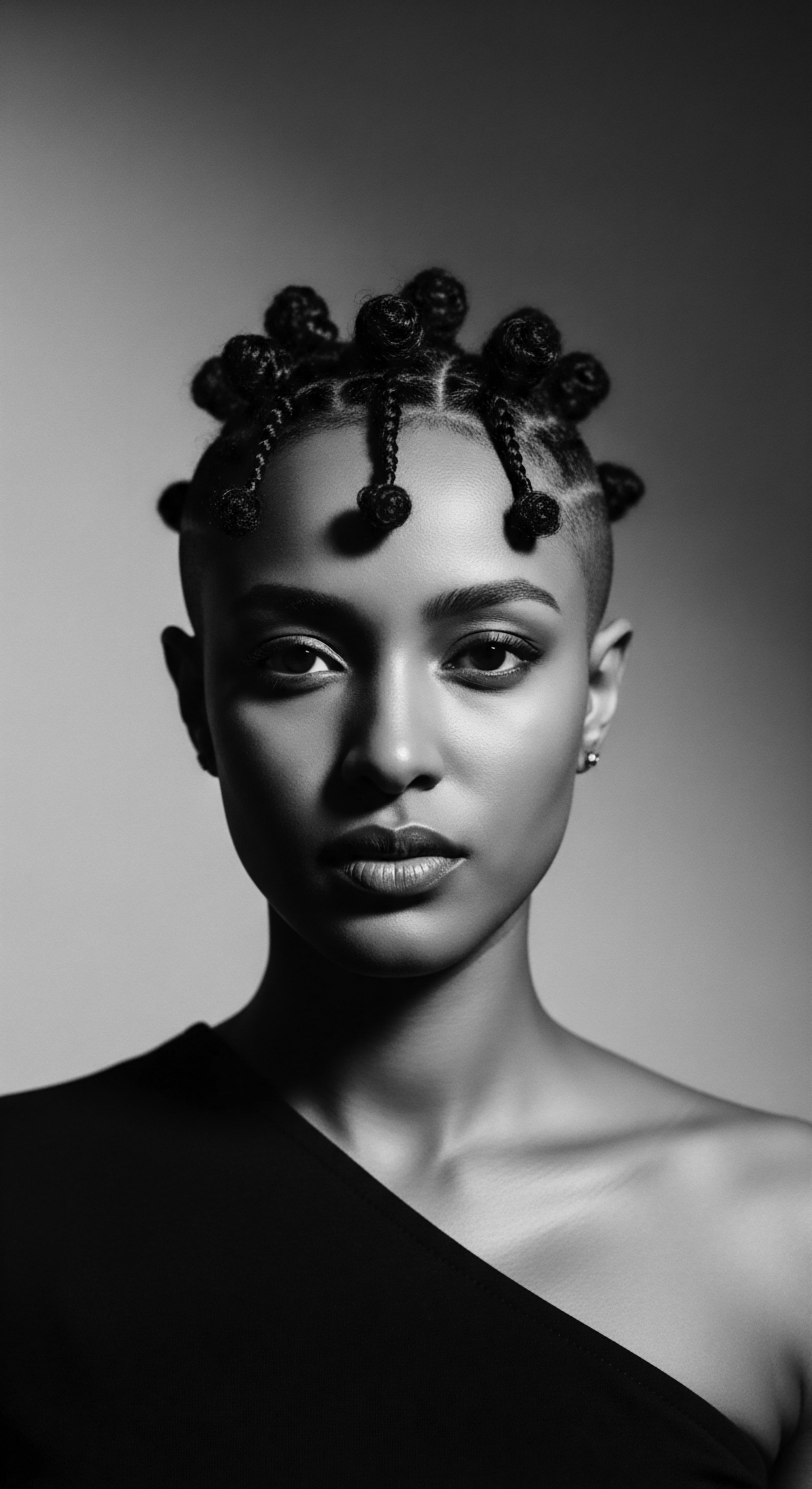
The Nighttime Sanctuary ❉ Ancestral Wisdom and Protection
The practice of protecting hair at night, now commonly achieved with silk or satin bonnets and scarves, is a direct inheritance from ancestral wisdom. Before modern textiles, various coverings, wraps, and intricate braiding patterns served to preserve hairstyles and shield the hair from friction against rough sleeping surfaces. These nightly rituals were essential for maintaining the integrity of textured hair, which is particularly prone to tangling and breakage during sleep.
Oiling the hair and scalp with castor oil before protective wrapping was a common part of this nocturnal ritual. The oil provided a sustained emollient layer, helping to keep hair moisturized and pliable overnight, reducing the likelihood of dryness and subsequent breakage. The weight of the oil also helped to keep styles smooth and neat, extending their longevity. This understanding of consistent, gentle care as a foundation for hair health is a timeless lesson offered by our ancestors.
The enduring legacy of castor oil in textured hair care transcends folklore, offering profound insights for holistic wellness and intelligent problem-solving.
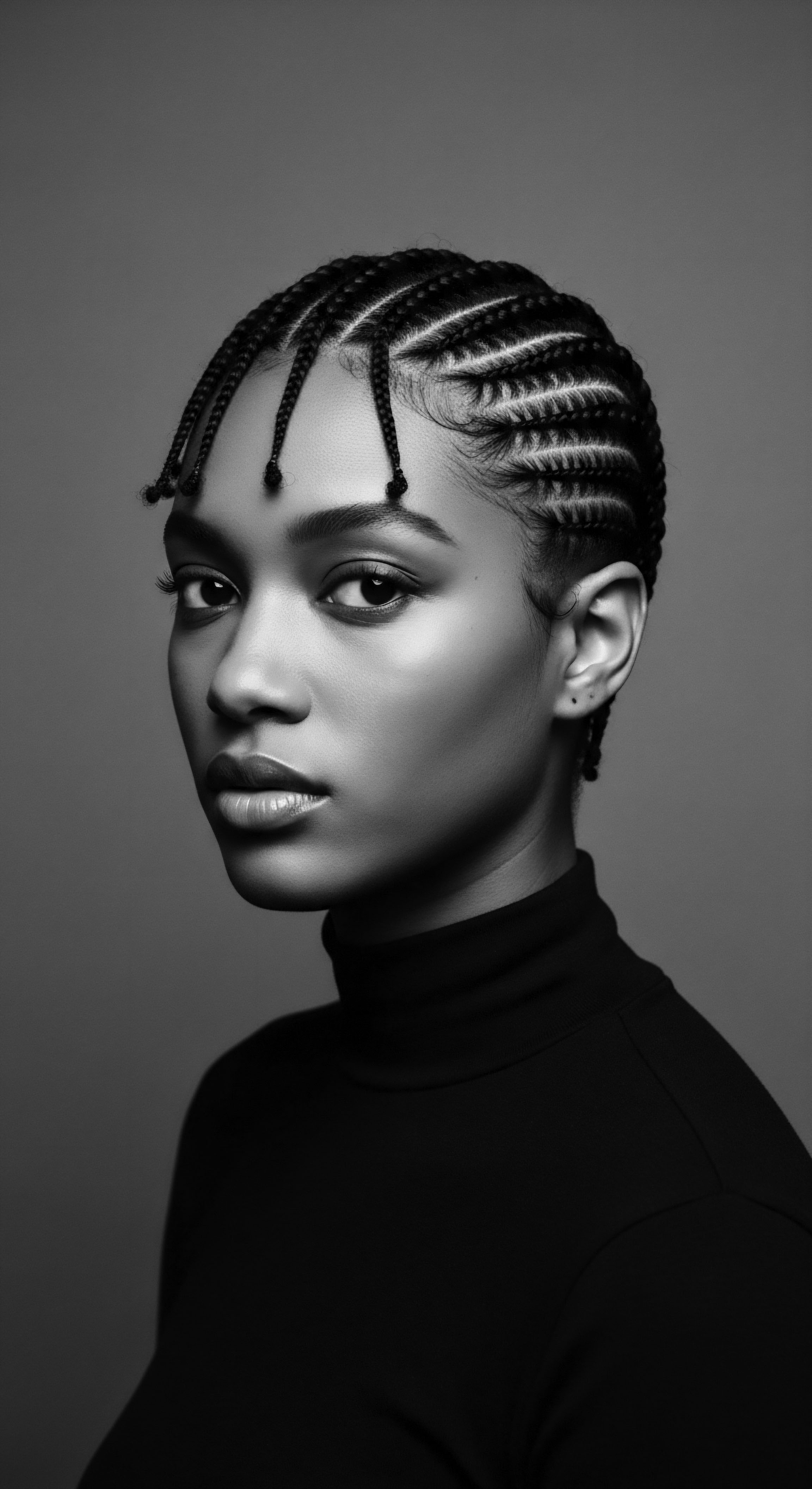
Botanical Deep Dives for Textured Hair Needs
The efficacy of castor oil, particularly the ricinoleic acid it contains, is a fascinating point where ancestral application meets scientific understanding. Ricinoleic acid, a monounsaturated fatty acid, is known for its anti-inflammatory and analgesic properties. When applied to the scalp, it can potentially address issues like scalp irritation or dryness, creating a healthier environment for hair growth. Its humectant qualities also draw moisture from the air, a boon for often dry textured strands.
Beyond its immediate chemical composition, the traditional use of castor oil often involved synergistic pairings with other botanicals.
- Rosemary ❉ Often infused with oils for its circulatory benefits, traditionally linked to growth stimulation.
- Fenugreek ❉ Known for its mucilaginous properties, providing slip and conditioning, often used in pastes.
- Hibiscus ❉ Valued for its conditioning and perceived ability to strengthen strands and prevent premature graying.
These combinations, developed through generations of trial and error, reflect a sophisticated understanding of plant properties long before laboratories could isolate active compounds. Contemporary regimens can borrow from this holistic blending, recognizing that the power of natural ingredients often lies in their combined effect.
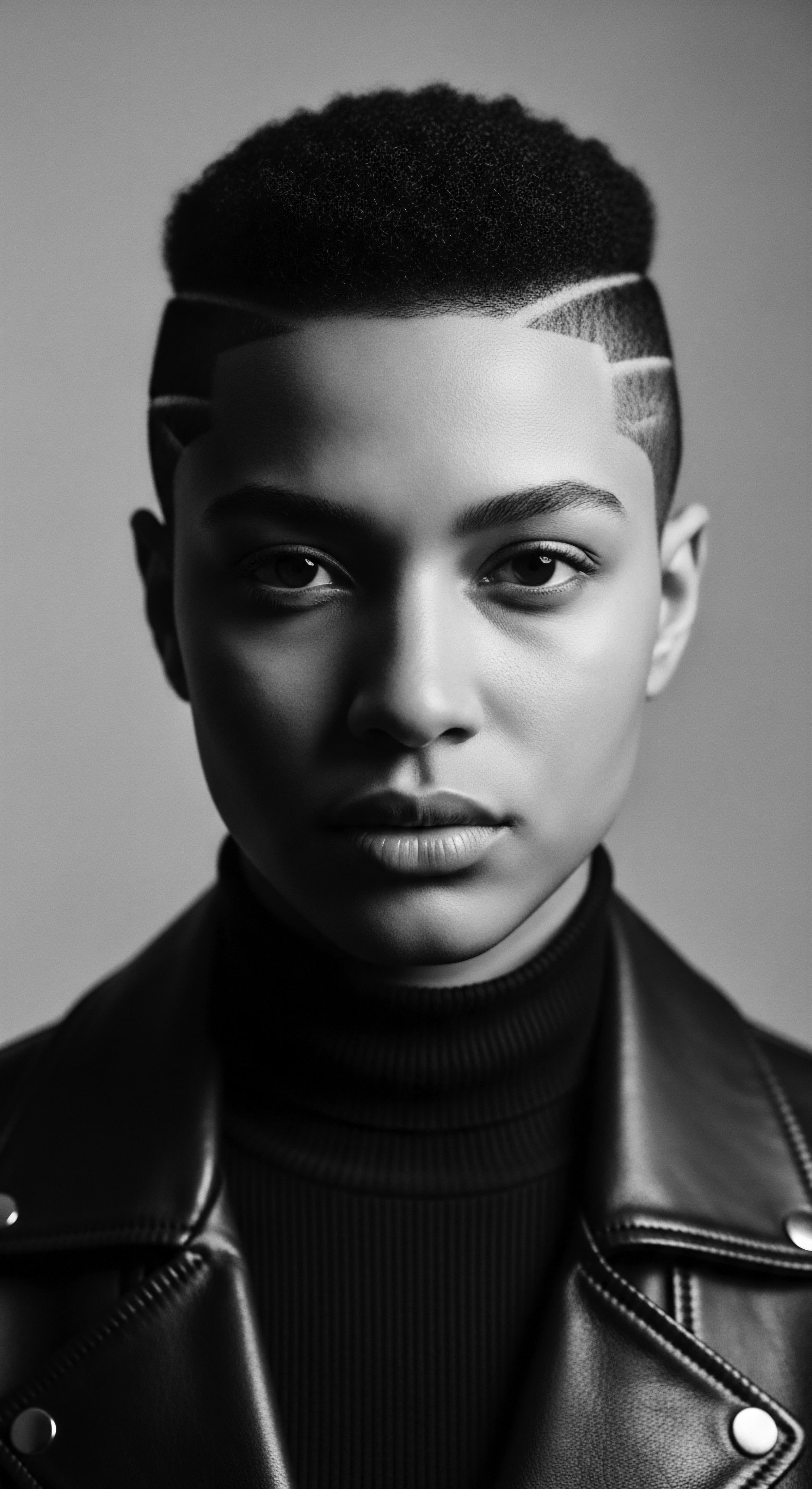
Addressing Hair Challenges with Ancestral and Modern Solutions
Textured hair presents unique challenges ❉ shrinkage, tangles, and the delicate balance of moisture and protein. Ancestral practices consistently addressed these issues through mindful care and targeted botanical applications.
Consider the pervasive issue of Scalp Health. A healthy scalp is the bedrock of healthy hair, a fact well understood by our ancestors. Castor oil, with its purported antimicrobial properties, was often massaged into the scalp to alleviate itchiness, flaking, or perceived imbalances.
This traditional approach aligns with modern dermatological understanding that a balanced scalp microbiome is essential for optimal hair growth. For excessive dryness, ancestral methods often included deep oiling treatments, sometimes left on overnight, a practice we now recognize as a “pre-poo” (pre-shampoo) treatment to protect hair from the stripping effects of cleansing agents.
The application of rich oils like castor oil also mitigated the effects of shrinkage, allowing coils to retain some length and offering a degree of environmental protection. The physical act of applying these oils, coupled with gentle detangling and sectioning, minimized breakage, a critical factor for length retention in textured hair.
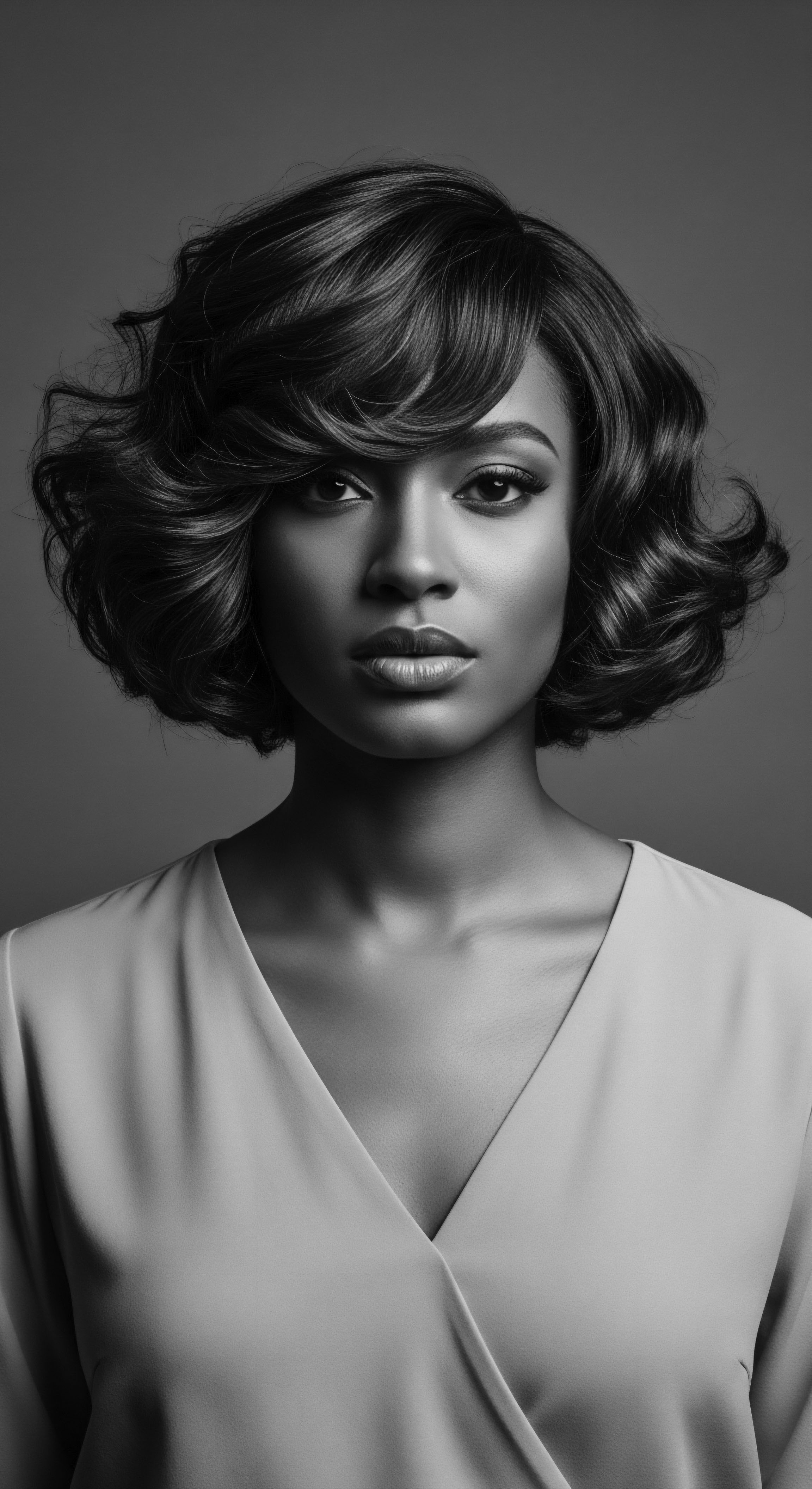
Holistic Influences on Hair Health from Ancestral Wisdom
The true richness of ancestral hair care extends beyond topical application. It is deeply interwoven with a holistic view of well-being. Diet, stress management, spiritual practices, and community connection all played roles in defining one’s overall vitality, including the health of their hair. The idea that hair is a barometer of internal well-being is a timeless piece of wisdom.
Ancestral wellness philosophies emphasize balance and harmony. When the body and mind are in equilibrium, the hair, too, can thrive. The ritualistic application of castor oil, often accompanied by song, prayer, or storytelling, served not only a physical purpose but also a psychological one, fostering a sense of calm and self-care. This deeper layer of engagement offers a powerful reminder for contemporary regimens ❉ that true hair health is a symphony of internal and external practices, a continuous dialogue with the self and one’s heritage.
| Traditional Belief/Use Thickens Hair/Promotes Growth |
| Modern Scientific Understanding/Correlation Ricinoleic acid's potential to improve scalp circulation and reduce inflammation, creating a better environment for follicles; reduced breakage from conditioning leads to length retention. |
| Traditional Belief/Use Adds Shine and Luster |
| Modern Scientific Understanding/Correlation High refractive index and emollient properties provide a glossy coating to the hair shaft, reflecting light. |
| Traditional Belief/Use Softens and Conditions |
| Modern Scientific Understanding/Correlation Fatty acid content provides deep conditioning, improves pliability, and reduces frizz. |
| Traditional Belief/Use Heals Scalp Issues |
| Modern Scientific Understanding/Correlation Ricinoleic acid's anti-inflammatory and antimicrobial properties address scalp irritation, dryness, and potential infections. |
| Traditional Belief/Use The enduring efficacy of castor oil, observed for millennia, often finds validation in contemporary scientific research. |

Reflection
As we draw this narrative to a close, a palpable sense of reverence settles upon us, a quiet appreciation for the enduring journey of textured hair and the practices that have sustained its vitality across continents and centuries. The deep connection of ancient castor oil practices to contemporary textured hair regimens is not a simple linear progression; it is a spiraling continuum, a testament to the resilience of knowledge and the profound wisdom encoded within our very strands. Our exploration has revealed that the spirit of ‘Soul of a Strand’ resides in this acknowledgement ❉ that our hair is a living archive, a repository of ancestral narratives, and a vibrant canvas for identity.
The wisdom held within ancient methods of hair care, particularly those involving botanicals like castor oil, extends far beyond their immediate cosmetic benefits. These were practices steeped in intention, in reverence for the body, and in a harmonious relationship with the natural world. They spoke to a holistic understanding of beauty and well-being, where hair health was intrinsically linked to internal balance and communal strength.
When we reach for castor oil today, whether it is the clear, refined version or the rich, dark Jamaican Black Castor Oil, we are not merely applying a product. We are engaging in an act of remembrance, a subtle invocation of those hands that tended to tresses in sun-drenched villages and bustling ancient cities.
The ability of castor oil to nurture, to protect, and to enhance the unique qualities of textured hair has been observed and passed down through countless generations. This continuity of practice, even as contexts shift and scientific understanding deepens, speaks to a fundamental truth. The ancient understanding of hair’s specific needs, its yearning for moisture and gentle handling, finds validation in every contemporary regimen that prioritizes these same principles. Our contemporary textured hair journeys, therefore, are not isolated experiences.
They are intricate extensions of a rich, unbroken lineage, each strand a connection to a deep, living heritage. The legacy of castor oil reminds us that beauty practices are not superficial; they are profound expressions of culture, resilience, and the enduring human spirit.

References
- Anyidoho, L. (2017). The Akan Hair Aesthetics ❉ Identity, Symbolism, and Hairstyles. University of Ghana Press.
- Johnson, A. (2018). Caribbean Botanicals ❉ Their Use in Traditional Hair and Skin Care. University of the West Indies Press.
- Manniche, L. (1999). Sacred Luxuries ❉ Fragrance, Aromatherapy, and Cosmetics in Ancient Egypt. Cornell University Press.
- Dweck, A. C. (2000). Handbook of Hair Care Science and Technology. Marcel Dekker.
- Khopade, A. J. & Jain, N. K. (2009). Cosmetic Science and Technology. CBS Publishers & Distributors.
- Robins, G. (1995). The Art of Ancient Egypt. Harvard University Press.
- Rastogi, S. & Rawat, A. K. S. (2015). Hair Care ❉ Herbal vs. Chemical Approach. Springer.
